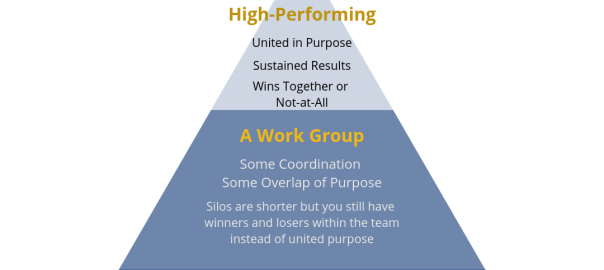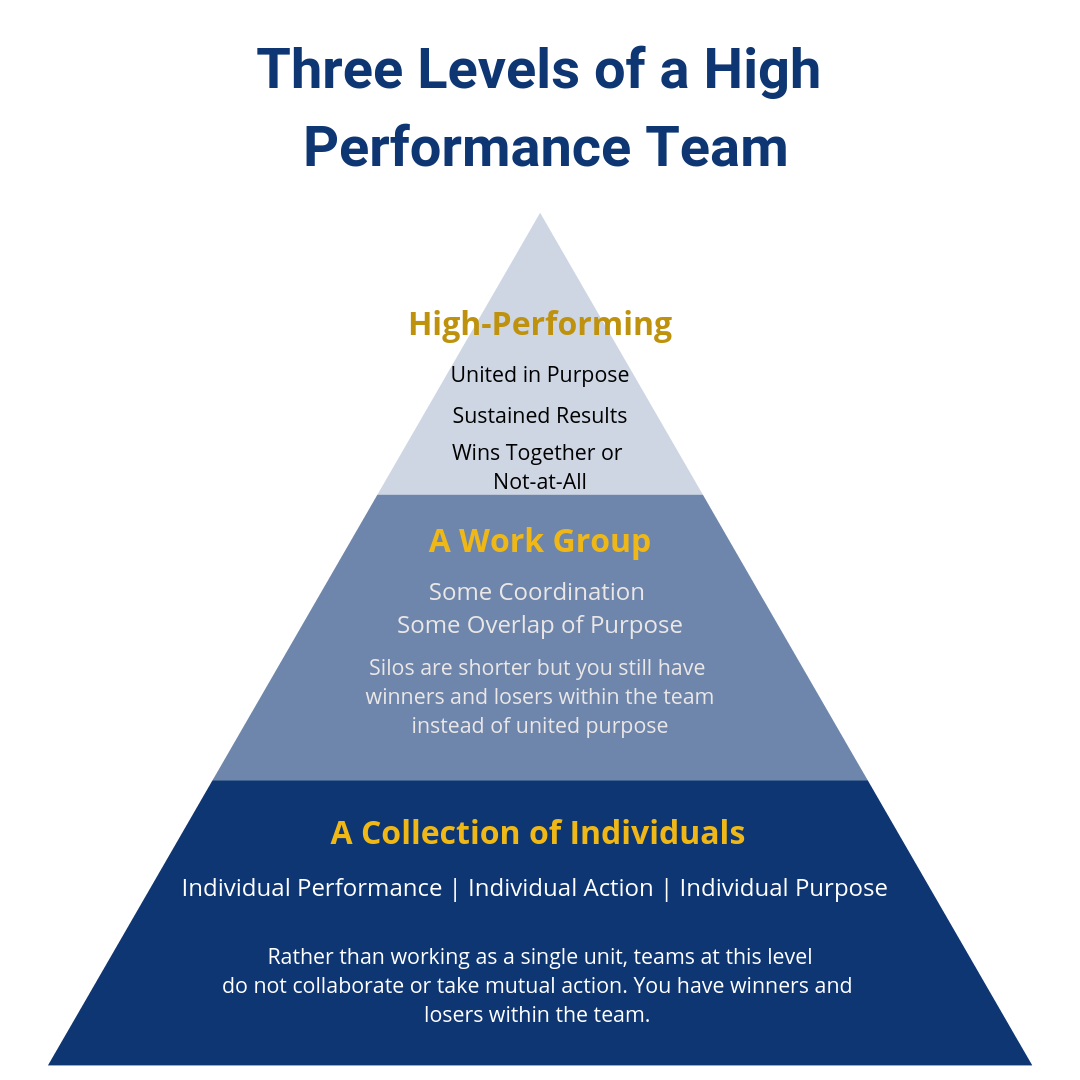— March 14, 2019
To build a high-performance team, you must progress through three phases of team development.
When you have responsibility for a team, you cannot improve it unless you know where you stand. Whether you are a new leader or already established within the group, your goal is to move to the third level to create a high performing team.
Only when team members feel connected by a strong sense of purpose, a clear understanding of roles and responsibilities, and high levels of commitment to the team will the team or department perform at the highest level possible.
So what does it take to create a successful team? Can it be done by installing a new team leader? What about writing new team processes or learning to resolve conflict? How about investing in team-building training?
The truth is, while sometimes these approaches help, team effectiveness mostly boils down to the cohesion of the individual members of the team. Performing teams include individuals who can independently do amazing things, but high performance comes from teams who have bonded together to target the specific business results they are looking to achieve?
First Level of a Team: A Collection of Individuals
Characterized by individual performance, action, purpose, and accountability, this level is more of a collection of individuals working alongside each other. Rather than working as a single unit, each operates within their own personal, high-walled silo. At this level, individuals do not collaborate or take mutual action, as it is each man or woman for himself or herself.
This attitude results in individual winners and losers – which is ultimately a failed team. When a team wins everyone wears the Super Bowl ring –not just the MVP. If everyone has not succeeded, then everyone has lost.
Second Level of a Team: A Work Group
Teams at this level have achieved some coordination of their efforts. Enough collaboration regularly happens that individual purpose begins to overlap. At this stage the silos have gotten shorter – people can look out over them, but they have not yet achieved a level of teamwork that puts the best interests of the group over those of individuals. The final result is that there are still individual winners and losers.
Third Level of a Team: High Performing
If you want to know if you have built a high performing team ask this question: Do both the people and the business results meet the objectives, and is this sustained over time? When they both do, you have a high performing team. All the individuals are winning, and when they do, the business results demonstrate this.
On occasion teams that I would consider Work Groups manage to come together long enough for everyone to win while delivering the results required in the business. However, if the team does not sustain the effort, it is not a team that qualifies as high-performing, This type of team is not something magnificent that descends from the heavens and suddenly you have a divine team. High performing teams are built purposefully by leaders.
Business & Finance Articles on Business 2 Community
(186)






